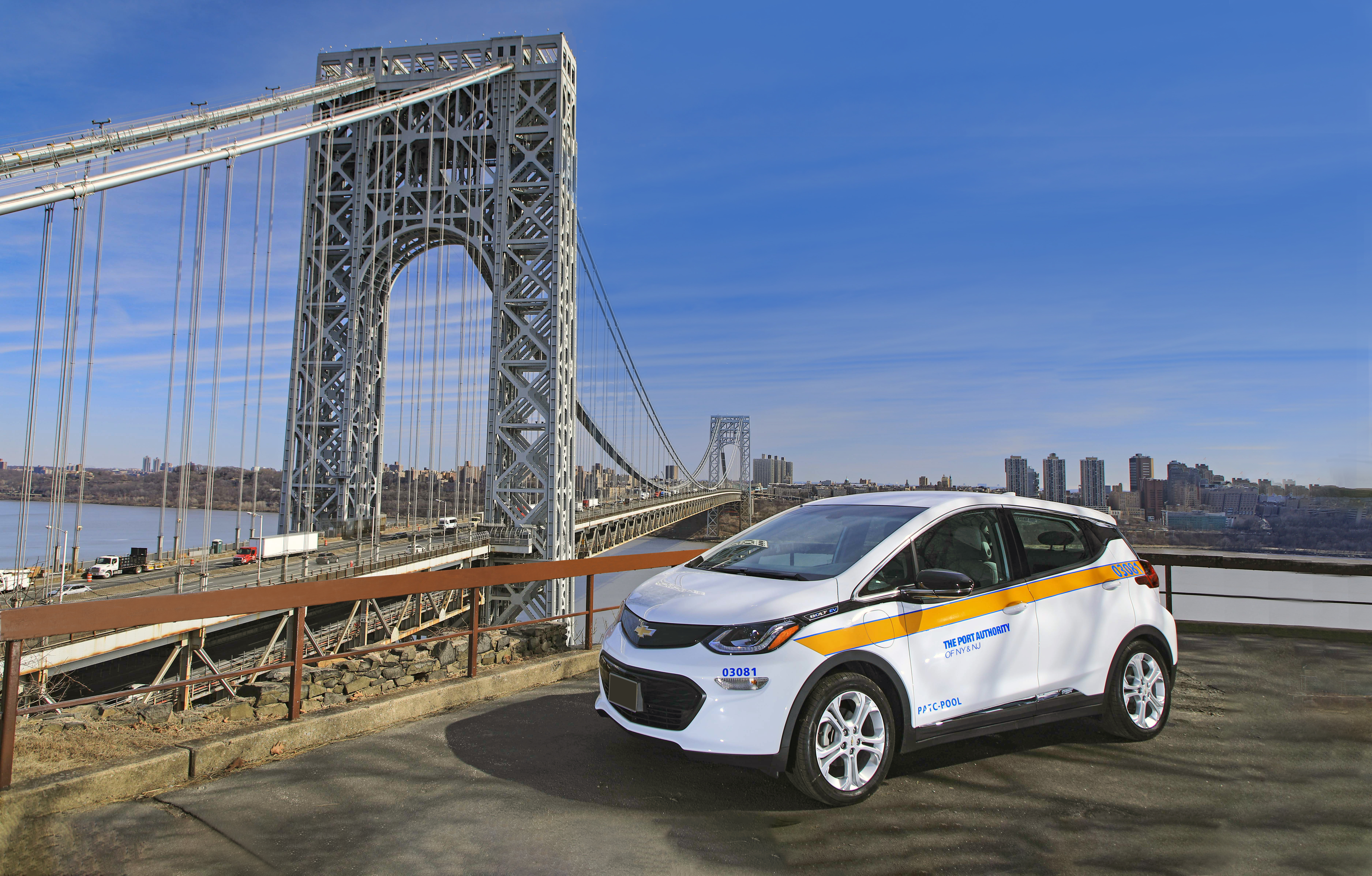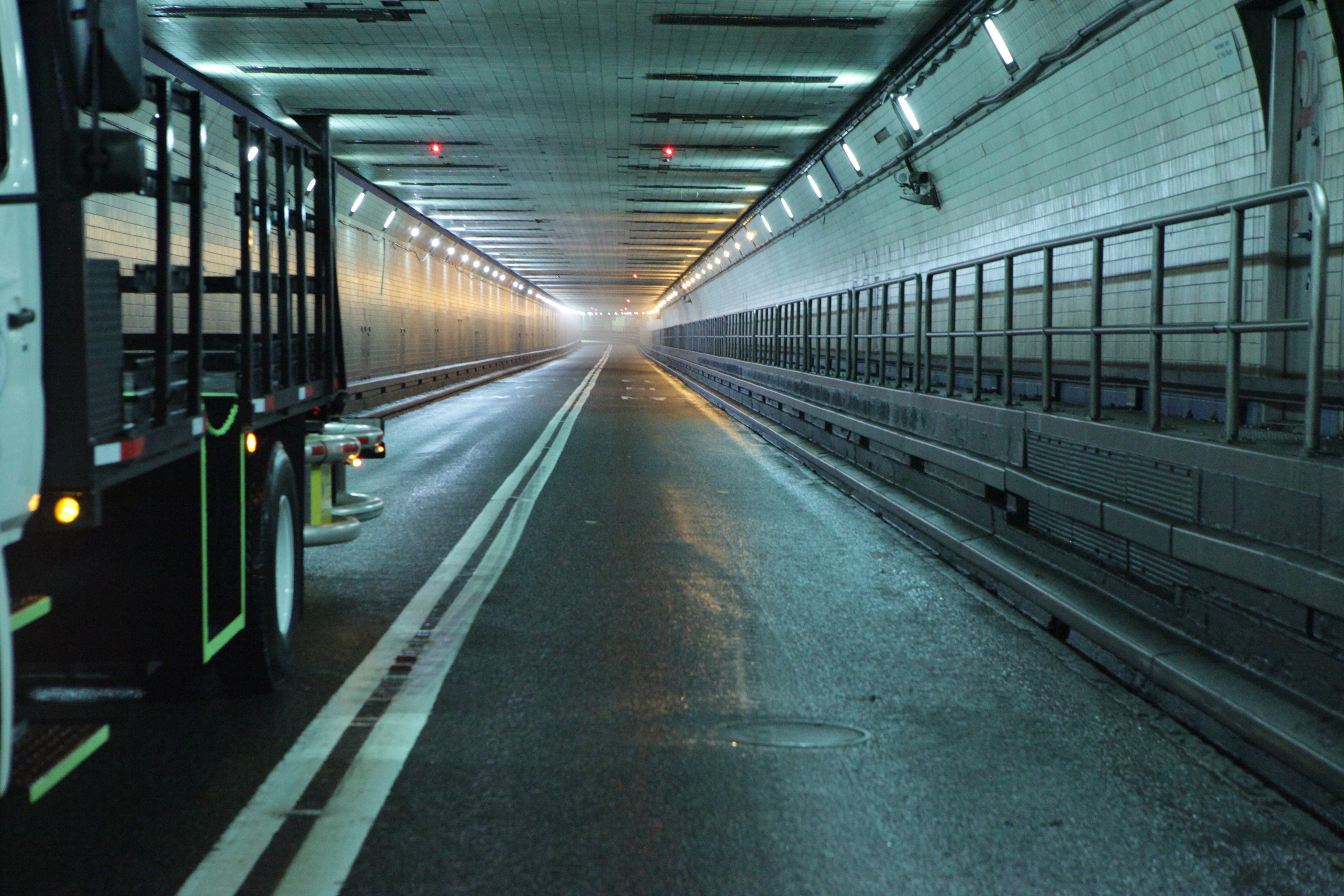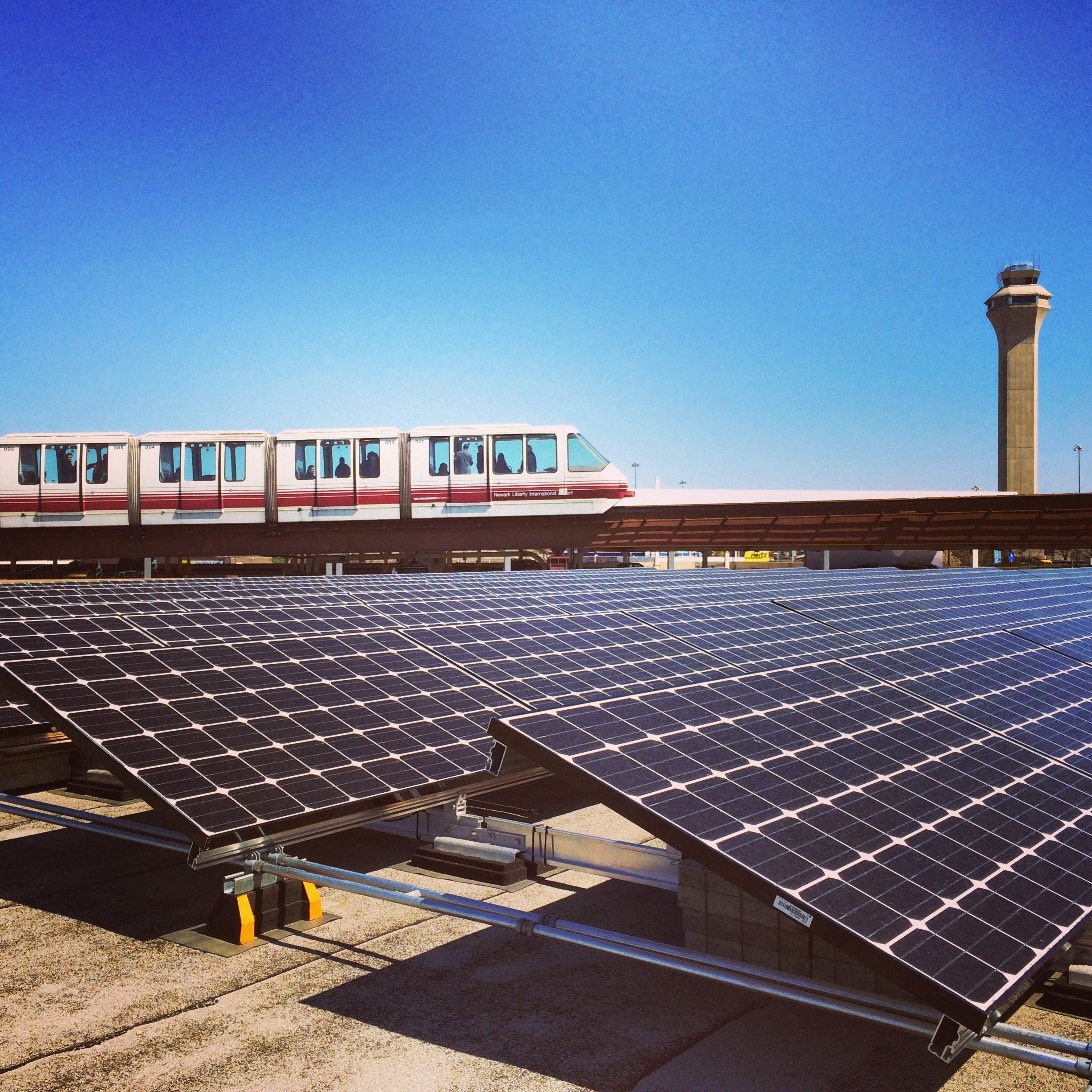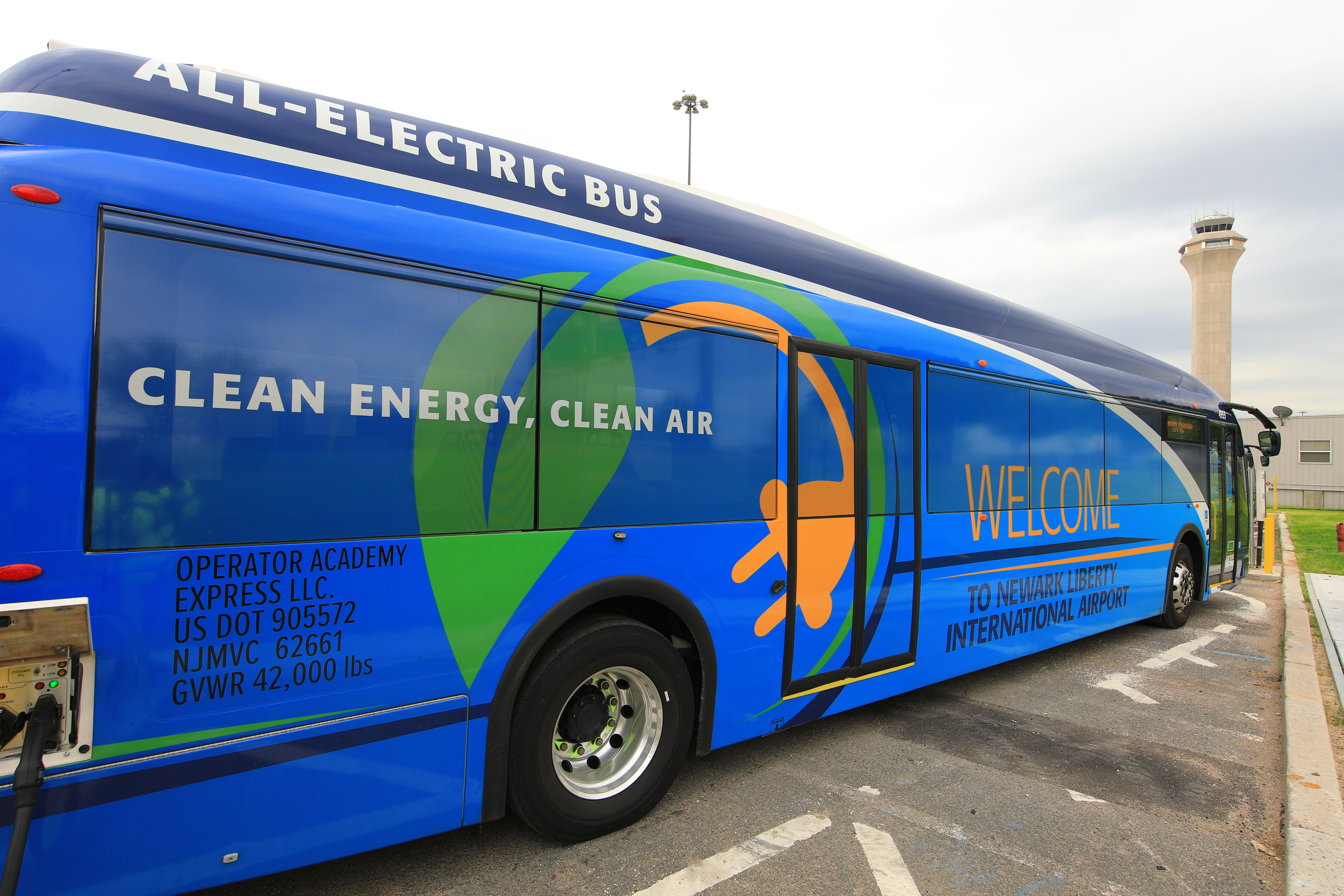
Millions of people and cargo containers pass through the airports, bridges, tunnels, railways and seaports connecting New Jersey and New York each year. Whether it be by air, land, rail or sea, the region relies on the Port Authority of New York and New Jersey, a bi-state government agency, to take those people and cargo to and from their destinations safely – despite rain or shine, snow or sleet.
But some weather events are so extreme that the Port Authority needs to adapt its facilities and operations to safely serve its customers.
The Agency has experienced firsthand the direct impacts of climate change. In October 2012, the Port Authority suffered a severe blow: Hurricane Sandy arrived in New York, devastating the region. This storm, exacerbated by climate change, resulted in US$2.2 billion in damages and loss to the Port Authority, which oversees transportation across the New York metropolitan area. These losses included delayed or cancelled flights for 900,000 airline passengers, 25,000 diverted shipping containers to other ports and 125 million gallons of sea water that completely inundated the World Trade Center site (still under post-9/11 construction at the time) and many of the PATH railroad tubes from New York to New Jersey.
“Sandy was a major wake up call,” said Christine Weydig, Director of the Office of Environmental and Energy Programs at the Port Authority of New York & New Jersey.
The Agency had been practicing environmental stewardship before 2012, but the Port Authority’s experience during Hurricane Sandy kicked this work into high gear. They became the first public transportation agency in the U.S to sign on to support the Paris Agreement, began disclosing to CDP in 2016 and adopted an aggressive interim target which committed the Agency to reducing greenhouse gas emissions 35% by 2025.
Today, the Port Authority seeks to lead by example – taking action on climate change through innovative sustainability measures, and encouraging other organizations in their space to join them in this critical work. We spoke with Christine Weydig to hear more about the Port Authority’s unique sustainability journey and why it is asking more government agencies to increase their own transparency and action.

Christine Weydig, Director of the Office of Environmental and Energy Programs at the Port Authority of New York & New Jersey
Resilience against future storms
Increasing storm events are the biggest climate-related risk facing the Port Authority, with the most potential to disrupt its business. “Climate-related storms present a real challenge to the Agency in terms of impact to our customers, tenants and staff because nearly all of our assets are concentrated in the densely populated and highly trafficked New York-New Jersey region, and because of the devastating impact such events can have on workforce availability and commerce,” said Weydig.
After Sandy, the Port Authority underwent extensive infrastructure repairs to ensure those assets would be protected from future storm events. In addition, the Port Authority proactively ensures that new infrastructure is protected from the impacts of climate-related risks before they are even constructed through its Climate Resilience Design Guidelines. The guidelines ensure that “the design of all new construction and major rehabilitation projects is to be evaluated based on … climate change variables,” including temperature, precipitation and sea level rise.
The Port Authority says these standards go well beyond code requirements and represent a risk-informed and science-backed approach to building and maintaining the region’s critical infrastructure now and in the future.
“The next time an event of this nature occurs – climate change-induced or otherwise – the Port Authority will be better prepared to operate its facilities with minimal downtime,” Weydig added.
Target setting
In line with its commitment to the Paris Agreement, the Port Authority announced 12 key greenhouse gas abatement programs known as the “Clean Dozen,” which form a large part of the Port Authority’s climate action plan. The Clean Dozen covers a range of programs including electrification, energy efficiency and renewable energy efforts. To demonstrate the commitment as being fundamental to the operation’s business, sustainability (and therefore climate action) became one of the six core pillars of the agency that support its overarching mission of “keeping the region moving.”
Tracking emissions and reductions through disclosure has been integral to meeting its target.
“We have been using CDP disclosure to help us align our climate change mitigation practices with global best practices, as well as understand the internal processes needed to strengthen and institutionalize the Agency’s long-term success in responding to climate change,” said Weydig.
“We always improve our practices and often utilize CDP research reports and data to keep abreast of the various industries’ and peer organizations’ climate efforts to determine areas in which we can improve. For example, the Port Authority recently used public CDP reports to understand what our industry peers and stakeholders considered to be their climate risks to help us identify further climate risks we could be tracking.”

LED lighting installation of the Lincoln Tunnel
Renewable energy & energy efficiency
Renewable energy presents a massive area of opportunity for the Port Authority – in terms of cost savings, energy supply diversification, value to its neighboring communities and more.
“Monetary savings are no doubt important; for example, we’ve seen rates from Power Purchase Agreements (PPAs) for on-site solar projects that represent meaningful savings compared to baseline utility rates, and conserve Agency capital. The Port Authority is also focusing on opportunities for ‘community solar’ projects to provide clean energy for our local communities,” said Weydig.
By deploying these through PPAs and working with local stakeholders and partners, the Port Authority has been able to avoid the upfront capital expense of the systems while displacing purchases of energy from the grid and insulating itself from energy market price volatility.
“From our experience, energy efficiency is well worth the effort, both for our emissions reduction strategy and the financial benefit.”
Weydig provided one current example: a new airport energy efficiency project the Port Authority is preliminarily scoping right now has an estimated US$10 million upfront cost and is projected to reduce emissions by 2,500 metric tons CO2e annually. But when all the benefits are tallied over the lifetime of the project, the Port Authority’s cumulative projected emissions reductions grow to 50,000 metric tons CO2e, and the project is estimated to have a positive net present value – including upfront costs – of nearly US$7 million.
“It’s still in the planning phases, but that’s the type of impact we aim to achieve,” said Weydig. “It’s well worth it to pursue such programs, and that’s why we’ve invested more than US$100 million in our energy efficiency projects to date, and plan to invest US$100 million more.”
Across the board, the Port Authority is seeking to implement new forms of renewable energy. Vehicle electrification efforts have required significant upfront investment, according to Weydig. But the fuel savings and maintenance of the electric vehicles themselves have lower operating costs over their lifetimes, making the investment worthwhile in the long run.
Benefits to the public
As a government agency, the Port Authority is committed to helping the businesses and communities it serves. Besides directly benefiting the Agency, its sustainability projects create a ripple effect of positivity across the New York metropolitan area.
These include:
- Supporting local green jobs in the region through the design, development and implementation of climate actions;
- Improvements to local air quality through its focus on electrification efforts and cleaner fuel requirements;
- Providing alternate modes of cleaner, affordable transportation to connect communities to jobs and reduce the dependency on cars via the provision of mass transit options; and
- Providing resilient infrastructure and facilities to customers and tenants to ensure that the impact on local communities and the economy are minimized during climate events.
The best example of public benefits to sustainability projects is the Port Authority’s on-site and community solar project at John F. Kennedy International Airport. The largest solar generation facility in New York City will provide 13 megawatts (MW) of clean energy, including 7.5 MW of cutting-edge battery storage capacity. Most importantly, nearly half of the system’s power is community solar, providing carbon-free energy to its neighbors. While making use of an underutilized asset (in this case, a long-term parking lot), the Port Authority is reducing emissions by over 6,500 metric tons CO2e. Additionally, it is supporting green jobs, improving local air quality and giving the community access to clean renewable energy, enabling its neighbors to join them in the green transition.
Bringing others on board
The Port Authority believes that as environmental ambition increases in the private sector, government agencies at both the state and local level must also do their part.
“Our peer government agencies should strongly consider disclosing to CDP – particularly if they have already set and communicated strong climate ambitions either established as their own initiative or driven by their various public and private sector stakeholders,” said Weydig.
“While the questionnaire may appear daunting during your first reporting cycle, it will help your organization improve its sustainability performance over time and help you elevate your organization’s ambitions. It gets easier each year. You will need to prioritize data management processes and establish the right connections across your organization, but you will eventually have a more streamlined and efficient reporting process for the years to come so you can continue to show investors that you’re making a positive impact.”
Weydig says this information is important for citizens, the academic community and investors to understand how organizations are addressing climate change and protecting themselves and their stakeholders from climate risks. After all, CDP’s independent market research in 2019 shows investors overwhelmingly believe that disclosure is an invaluable tool for managing risk and informing investment decisions. More municipal bond investors are beginning to ask for information on climate risks, and they are increasingly utilizing CDP disclosure to better evaluate the risks of their investments and understand the impacts and ambition of various issuers. 515 investors with US$106 trillion in assets are requesting thousands of companies and public sector issuers to disclose to them through CDP in 2020 – a huge increase from the 35 who signed CDP’s first disclosure request in 2002.
“The transparency in disclosing to CDP demonstrates that an organization has taken the steps to implement robust and long-term plans that look beyond economic growth and in turn consider a range of external factors that can affect performance,” said Weydig. “Disclosing reflects that an organization is confident in its response to climate change and wants to demonstrate its commitments publicly.”
Additionally, Weydig says disclosure helps sustainability practitioners make the case to their leadership through demonstrating areas that may need improvement or where the organization has existing strengths.
As a collective, government agencies can increase transparency and ultimately scale up their environmental action. That’s why the Port Authority hopes to see more peer organizations disclose to CDP in the years to come.
“The ability to compare organizations’ disclosures with industry peers help all organizations strive to continue to improve their practices,” said Weydig.


